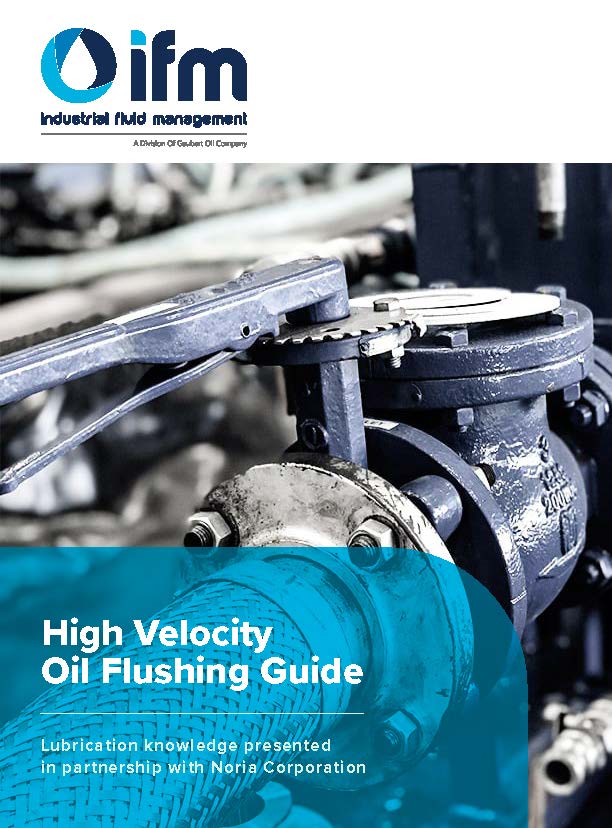Sludge and varnish are never a welcome sight on machine surfaces. But often, they lurk unseen inside pipes or other areas of circulating oil systems and lead to decreased oil service life and increased wear on component surfaces, even silt lock (also known as valve stiction).
These products start in the dissolved form, accumulating until the lubricant reaches its capacity, referred to as the saturating point, forcing any excess to convert into insoluble degradation products. Without regular turbulent flushing with a high-velocity system, varnish and sludge can be a source of unreliability and the root cause of mechanical or other failure types.
Sometimes these deposits form on machine surfaces at the exact location where the oil has degraded. In other cases, the oil degrades in one location but, the insoluble degradation products are carried elsewhere by the moving fluid forming deposits on surfaces. Oxidation and the evolution of free radicals combine to form varnish, these sticky deposits adhere to the metal oil loop surfaces — piping, valves, heat exchangers, strainers, filters, and other sensitive equipment.
In turn, this growing film catches other fine particulates on the sticky surface, which continues to build up around the particulates, forming an abrasive, destructive surface. Research has shown that deposits of polymerized oil oxidation products contribute to the deterioration of gaskets and mechanical seals.
Over time, some deposits can thermally cure to a tough enamel-like coating. Other types of deposits, generally in cooler zones, remain soft or gummy and may, in some cases, appear clear and grease-like. The following are examples of where sludge and varnish might occur in turbine lube oil and electrohydraulic control systems:
- Black crusty deposits on mechanical seals
- Gold adherent films on valves
- Charcoal-like deposits on babbitt sleeve bearings
- Gooey-brown accumulations on oil filters
- Black scabby deposits on mechanical seal surfaces and thrust-bearing pads
- Carbonaceous residue on mechanical surfaces
The deposits that form on sensitive machine surfaces interfere with the flow of fluid and the machine's mechanical movements. The deposits can also contribute to wear and corrosion or impair heat transfer by clinging to surfaces. For example, deposits on the spool and bore of a servo control valve can tighten the interference fit.
Other types of sludge and varnish-induced failures include:
- Silt lock valve failures
- Plugged orifices
- Damaged mechanical seals
- Plugged discharged ports
- Journal-bearing wear (disrupted hydrodynamic film production)
- Premature plugging of oil filters
- Impaired oil cooler performance
Heat: The Root Cause of Varnish
Without an effective removal system for oil oxidation products, such as oil flushing, the varnish contamination level in the oil will inevitably grow until it exceeds the capability of the inhibitors, regardless of the robustness of the oil additive package for oxidative and thermal stability.
Higher operating temperature or increased levels of harmful catalysts, such as water and wear metals, accelerate oil oxidation and challenge the effectiveness and durability of antioxidant additive packages.
For every 10°C (18°F) increase in operating oil temperature, the rate of oil oxidation doubles. This is known as the Arrhenius rate rule. However, oxidation of oil, and therefore the formation of varnish, are not slowed as much as expected when the oil temperature is kept below 60°C (140°F). This is because other causes of localized intense heat, beyond the heat generated within the turbine bearings, exist within the oil circuit.
One cause of hot spots in the oil is microdieseling, which is the implosion of entrained air bubbles when the oil passes through a high-pressure pump in the hydraulic circuit. This creates a local oil temperature in excess of 1,000°C (more than 1,800°F), which releases more than enough heat to cause oil molecules to oxidize.
Another cause of hot spots is the generation of spark discharges. The power generation industry's shift to synthetic and glass filter media has created unexpected side effects caused by the combination of tighter filter pore sizes to remove fine sediment with high filter flux rates (flow rate per unit area) to reduce capital cost. The result is a static charge buildup within the oil system.
These spontaneous discharges (lasting nanoseconds) can generate sparks with temperatures greater than 10,000°C (more than 18,000°F), which is hotter than the surface of the sun.
This intense heat caused by static discharges literally cooks the oil, creating oil molecule fragments that deplete antioxidant additives.
Although filter manufacturers are conducting research to mitigate the static charge effect of synthetic and glass media, additional research has shown that places in the oil circuit where metal-on-metal contact occurs can also generate a significant static charge that leads to spark discharges.
Even gas turbines that drive peaking units with low operating hours are still vulnerable to oil oxidation and varnish formation. Rolling the turbines with the turning gear two to four hours each week minimizes rotor bowing, and keeping the lube oil circulating at all times maintains reliability and availability. Unfortunately, with these benefits comes the undesirable side effect of furthering lube oil oxidation and varnishing.
Wrapping Up
Despite our best preventative efforts, oxidation can still occur on any machine in any facility. When a substance combines with oxygen, it can have a devastating effect on your valuable machinery. This is why it's important to understand the root causes of varnish formation and how to prevent and mitigate its effects, such as with a high-velocity oil flushing performed by a trusted solution provider. By partnering with the right people and using the best techniques, you can effectively manage oxidation and varnish levels throughout your plant.
